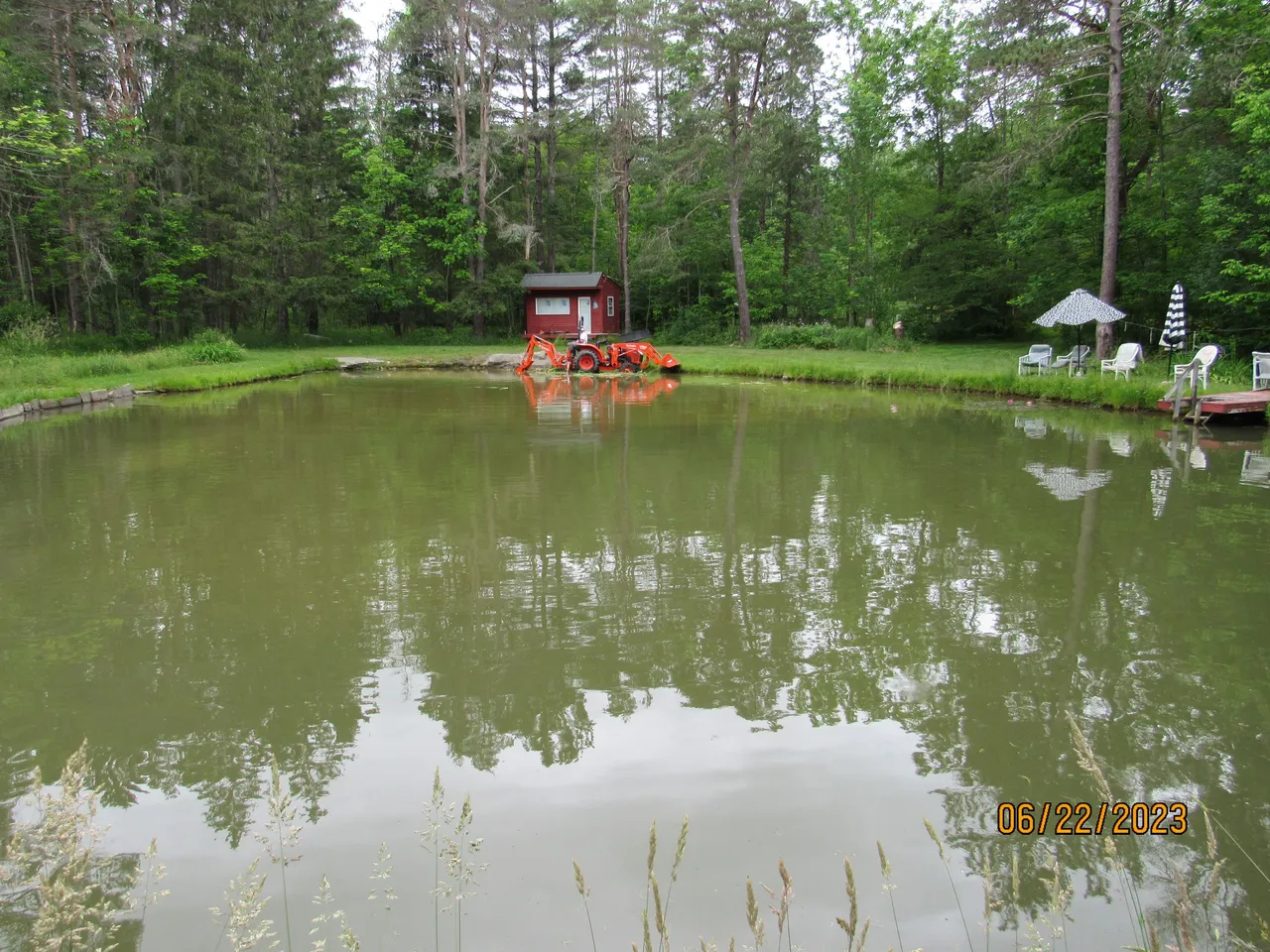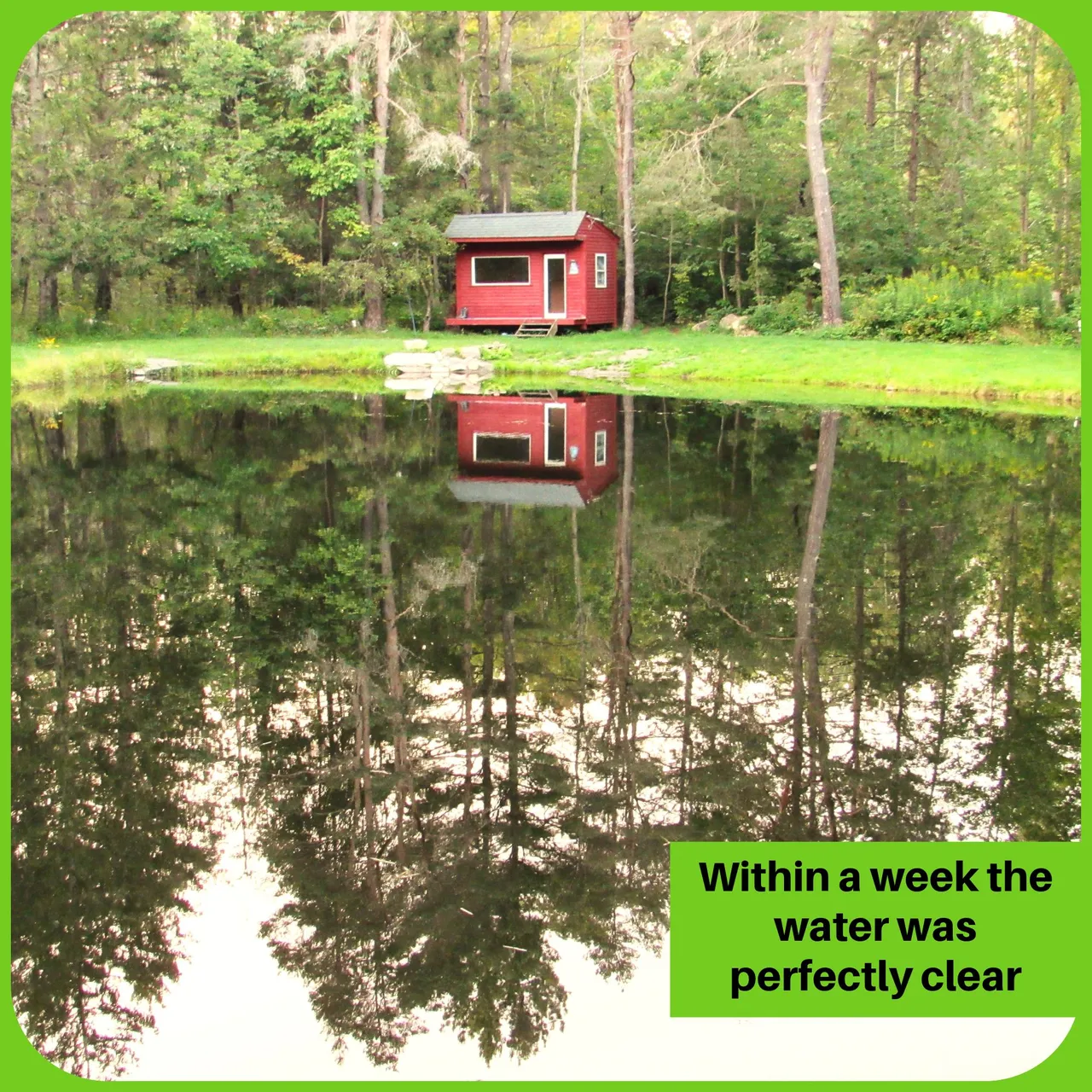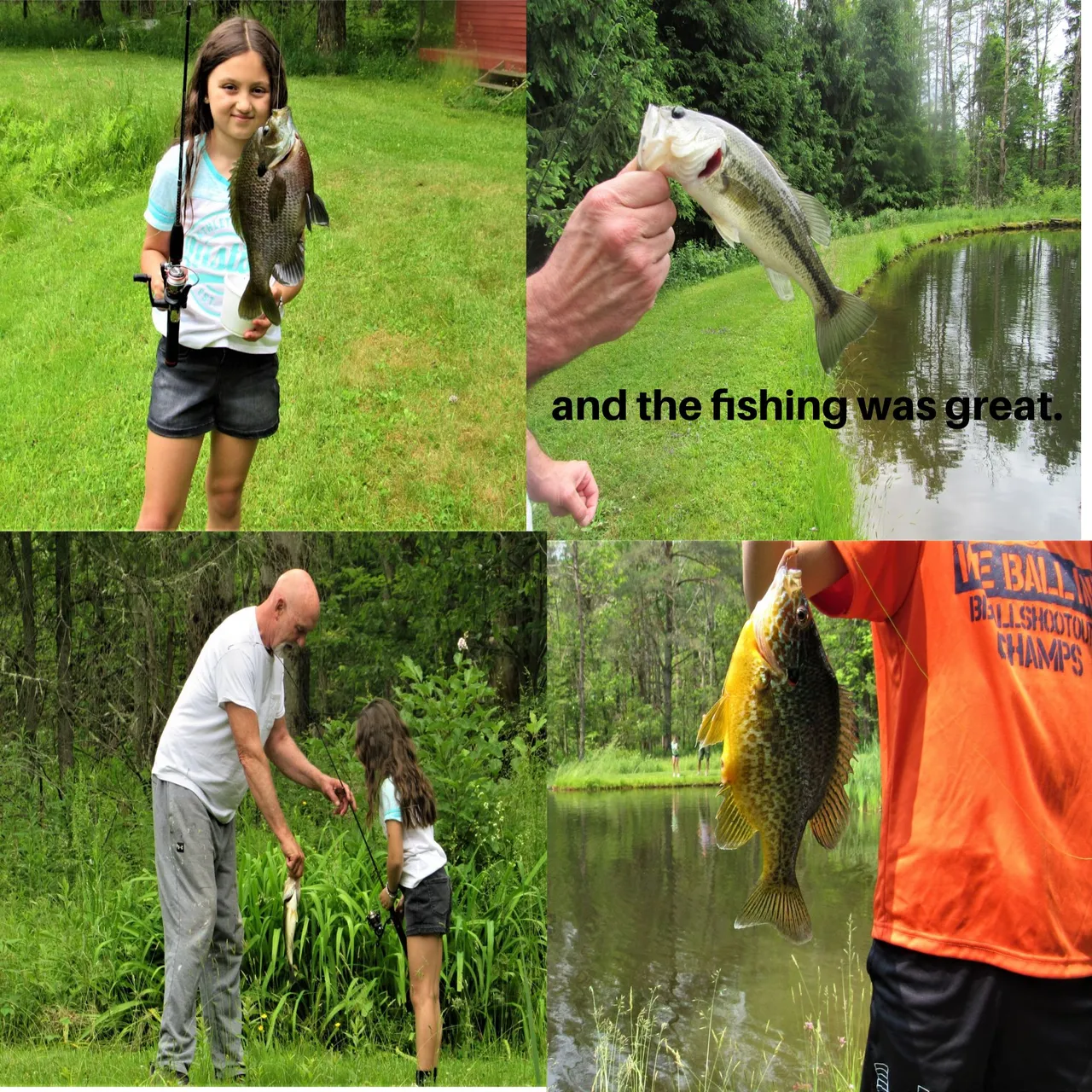Cattails have been a nuisance in our pond for years.
In the past, I've spent many hours every year trying to beat them back. Their rooting system is prolific as it weaves its way in all directions, popping up new vegetation everywhere.
To control these invasive water plants you need to disrupt the root system through cutting, hand-pulling, DREDGING, or by using chemical herbicides. Cutting them makes them disappear for a while, but they grow right back. Hand-pulling Cattails is back-breaking, this I can attest to. Killing them with chemicals is out of the question. In the past, digging them up was also not an option, but it's an option now.
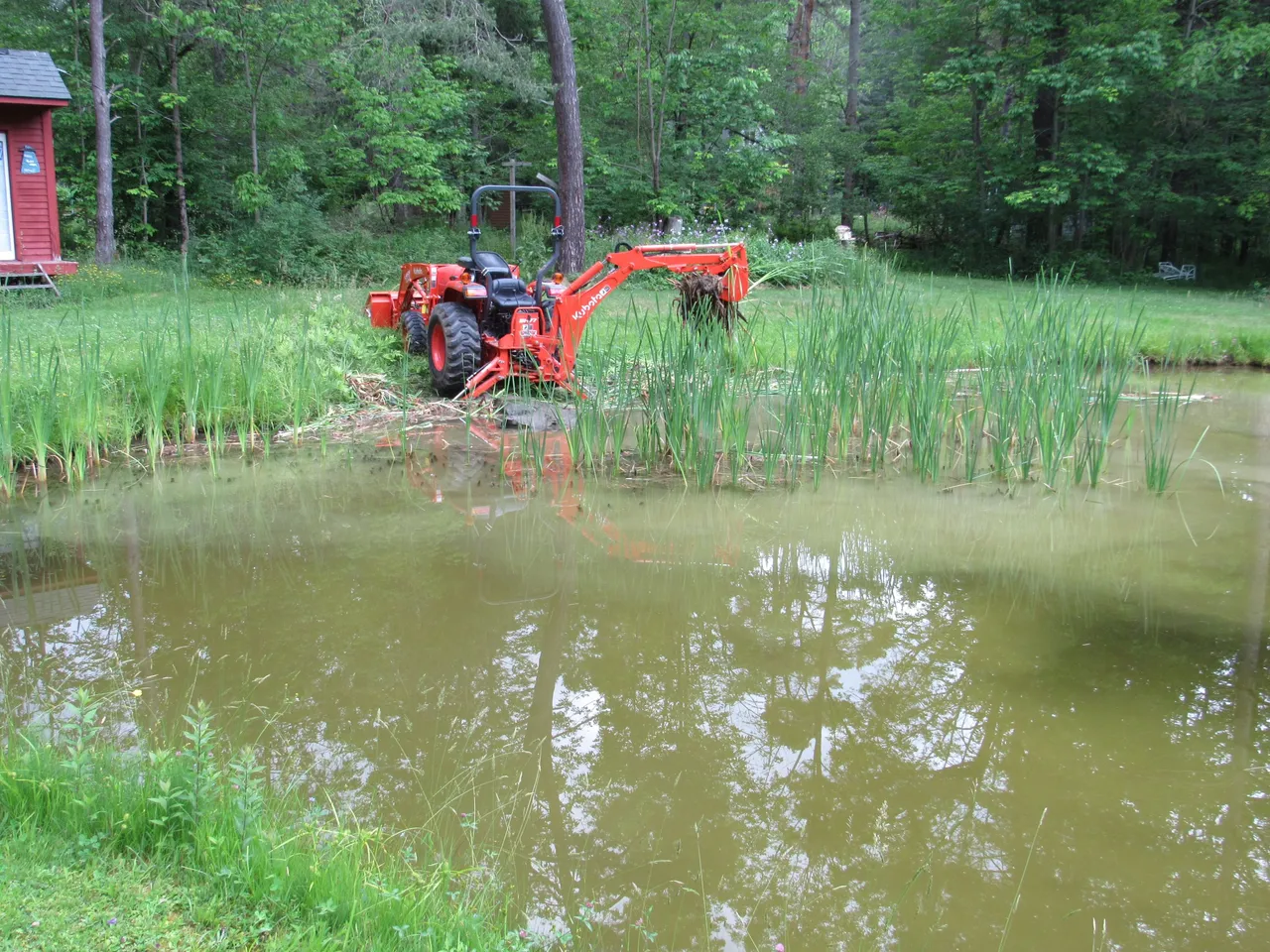
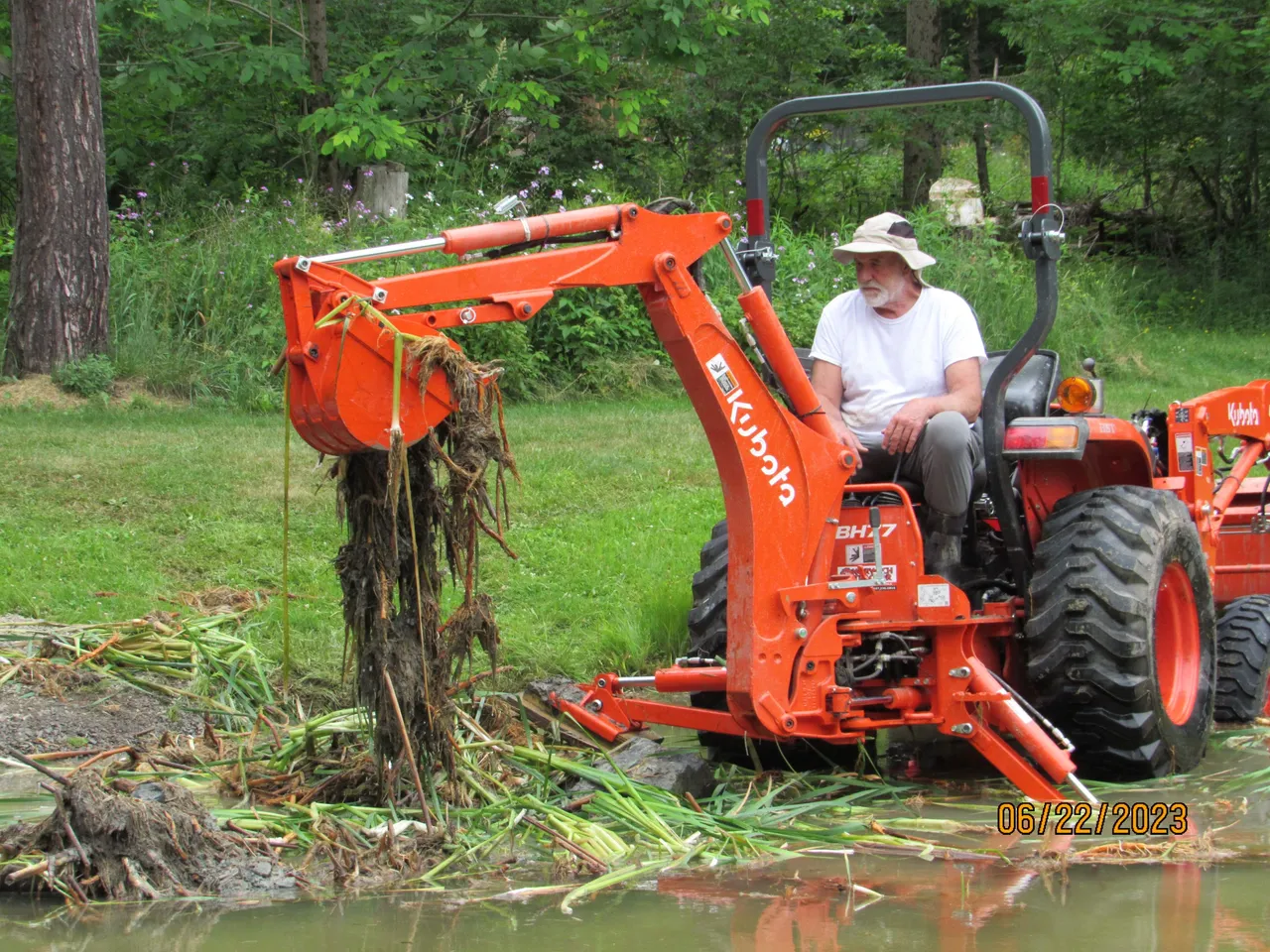
Now, could you imagine digging up this tangled ball of roots by hand, that would be almost impossible.
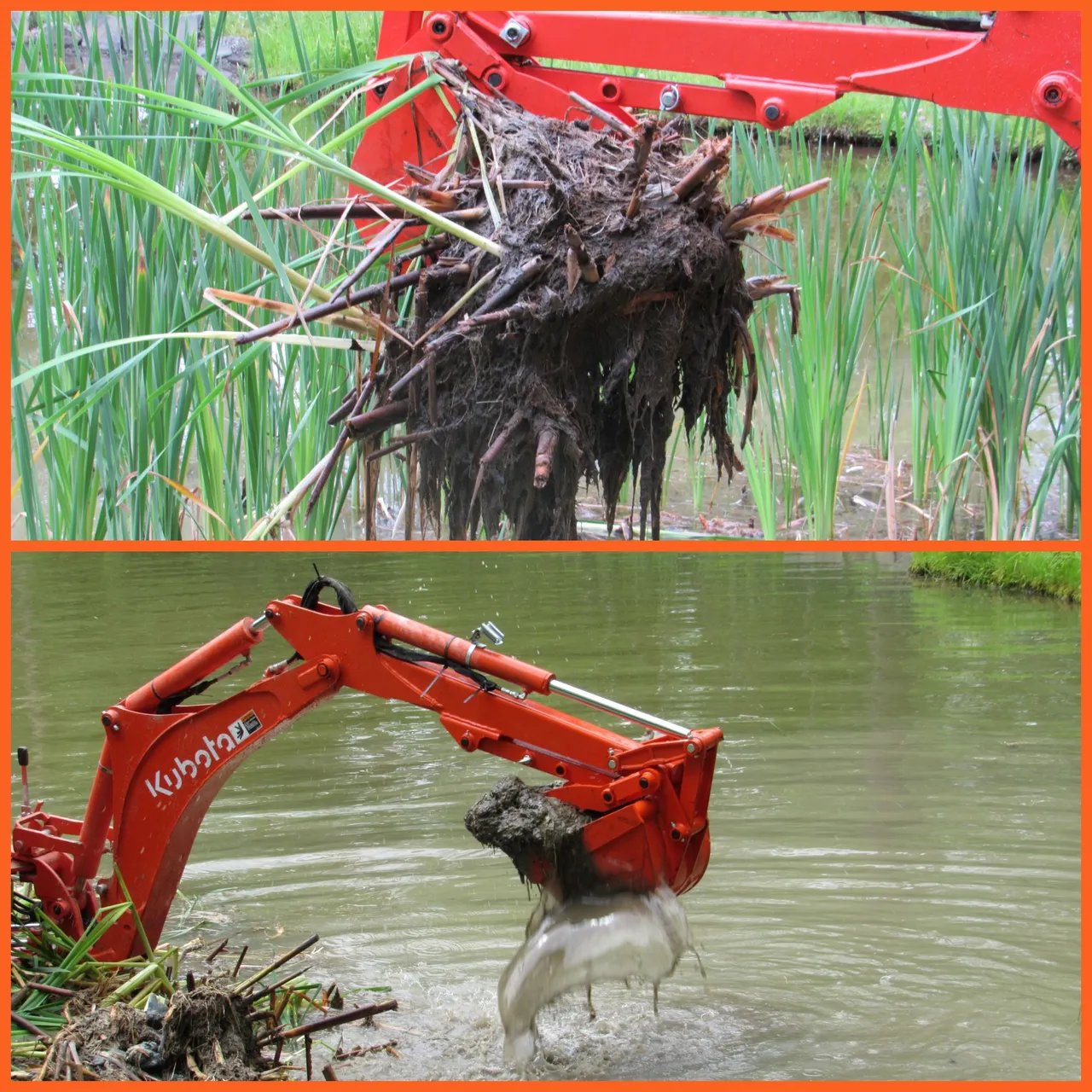
After unearthing the cattails, I still needed to dispose of them which was no simple task. The root balls had to weigh a hundred pounds or more. To lighten the load I would swish the the root balls back and forth in the water washing away much of the earth that was clinging to the roots.
Doing this made it possible to load them into the bucket and then dump them into the woods.
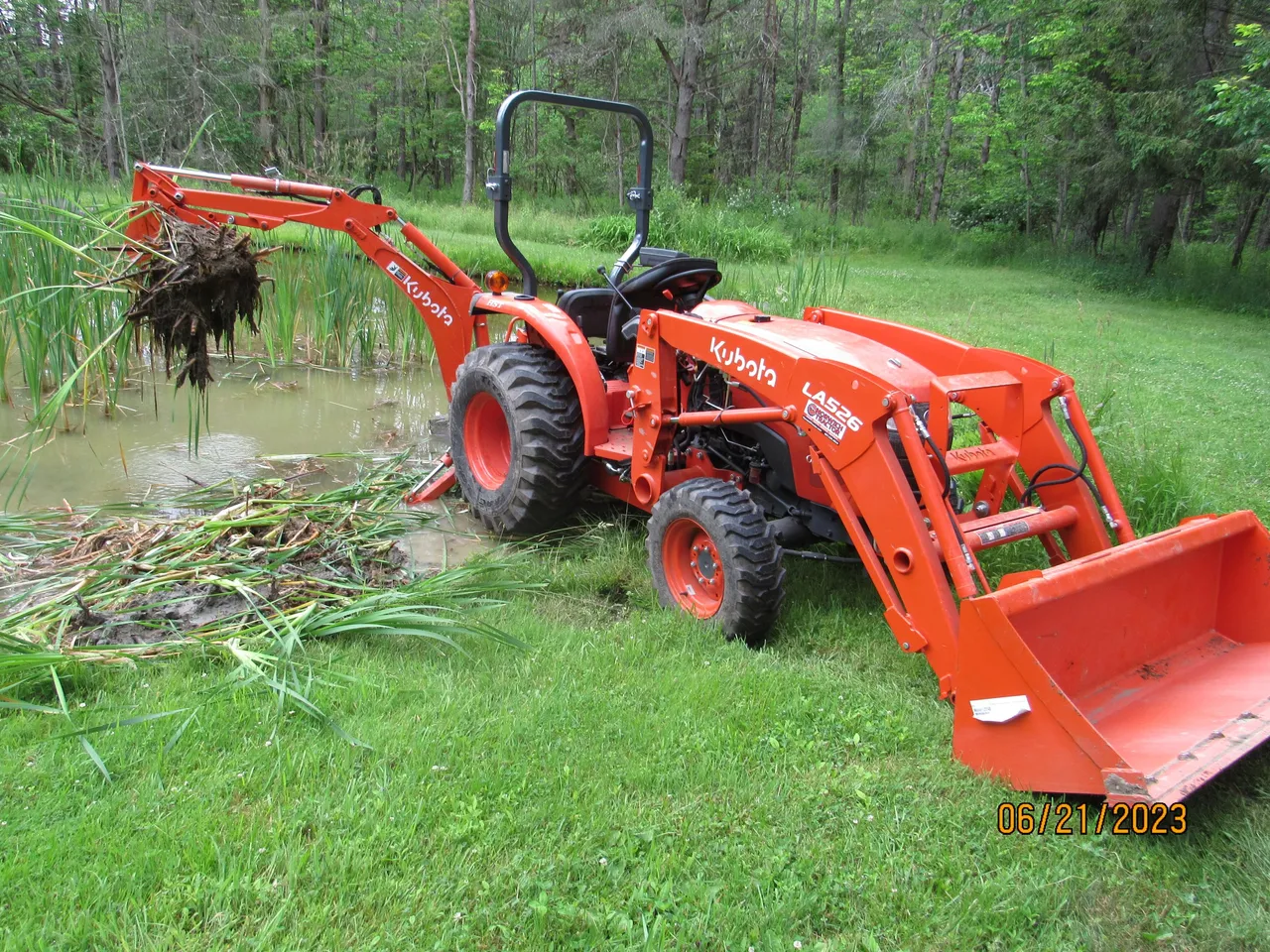
I made sure that I netted out every single root that had broken off.The last thing I needed was to have any of these roots floating to another area of the pond and take root somewhere else.**
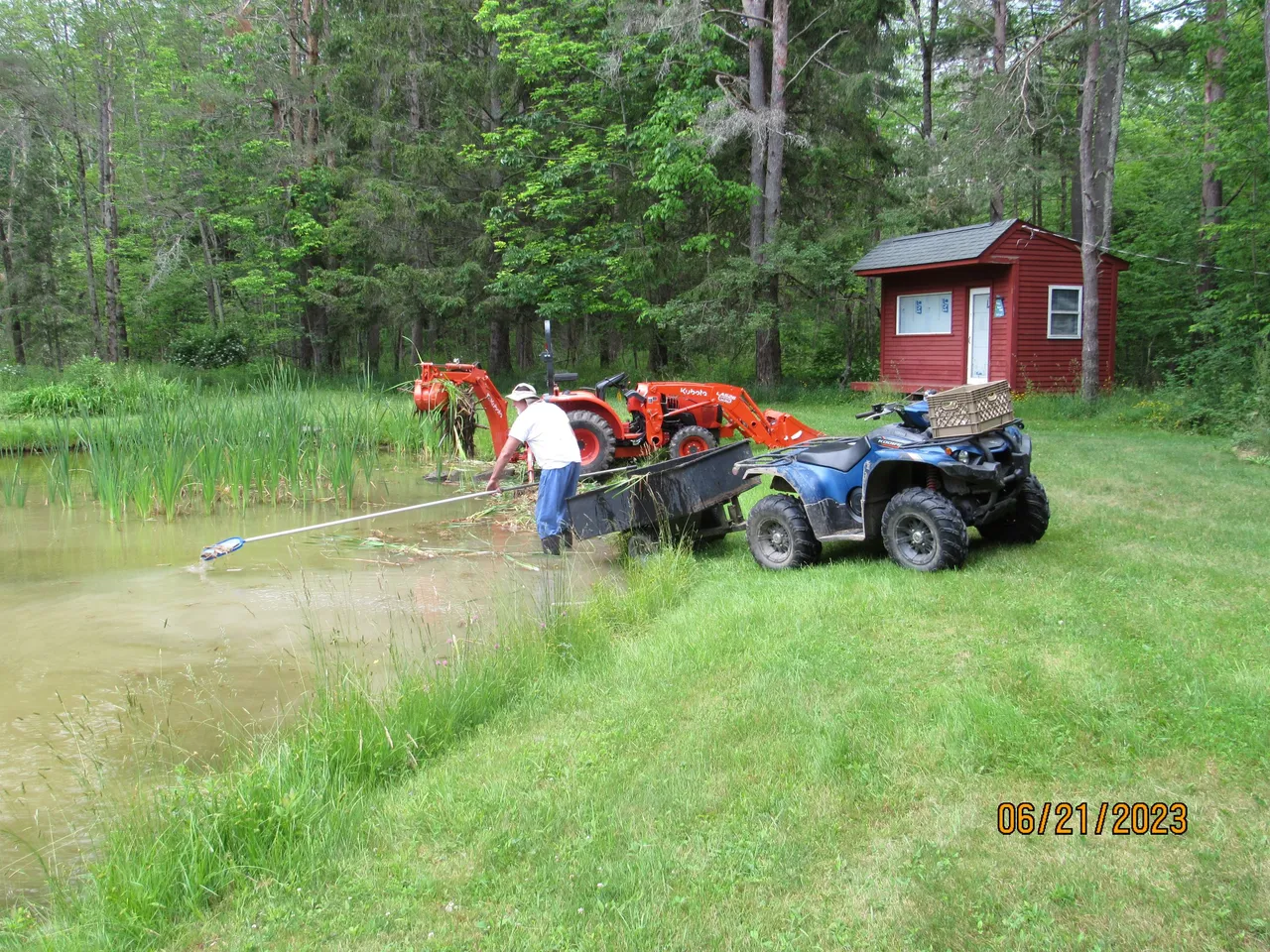
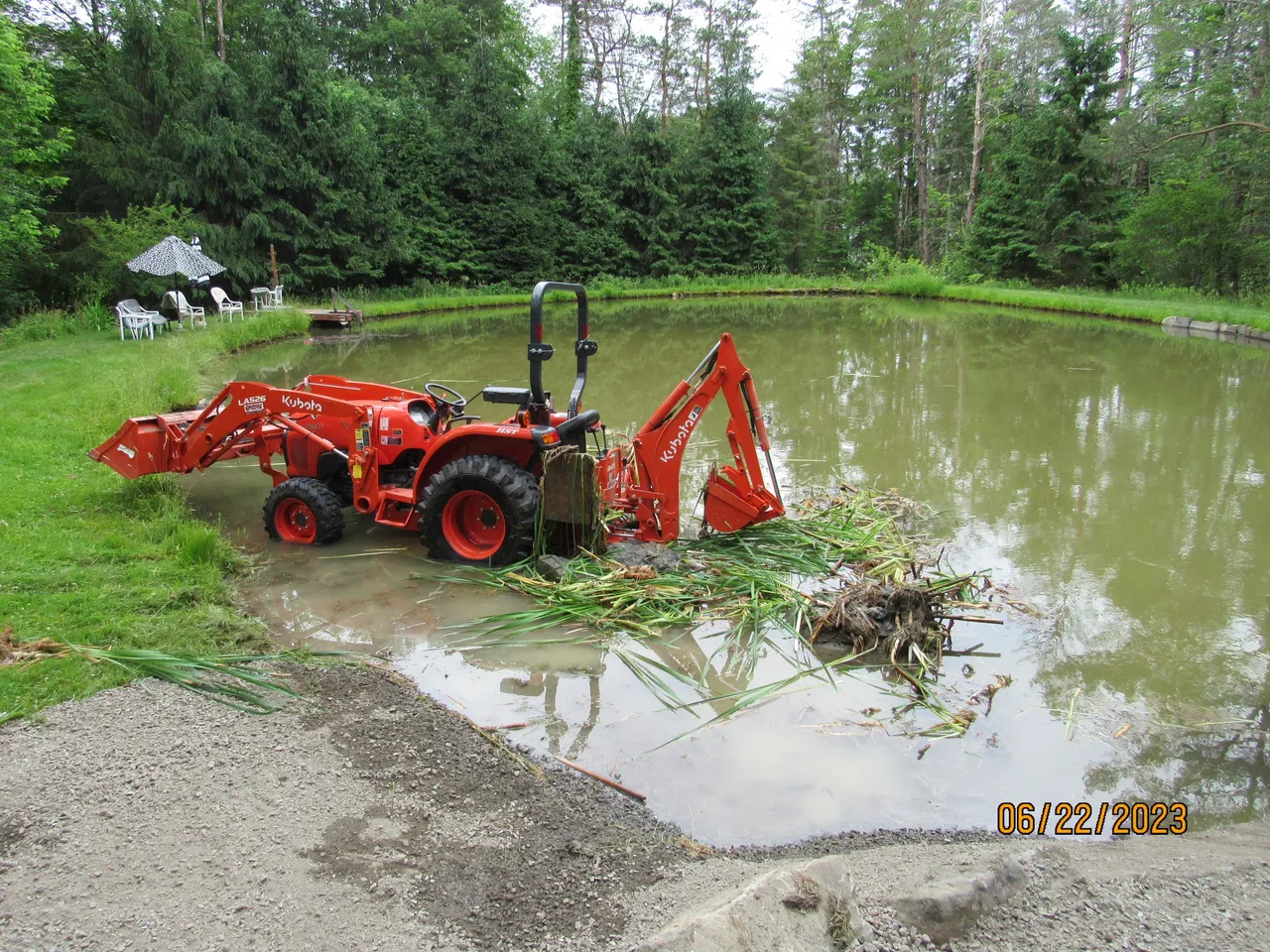
Washing the dirt off of the root balls sure made them easier to load into the bucket of the tractor, but doing so sure did cloud up the water. It was not long before the entire pond was very cloudy. In this pick, taken several hours after starting, you can see the muddy water spreading throughout the pond.
This situation definitely provided the right conditions for some cool #reflections. At this point, my concern was how the cloudy water would affect the fish.
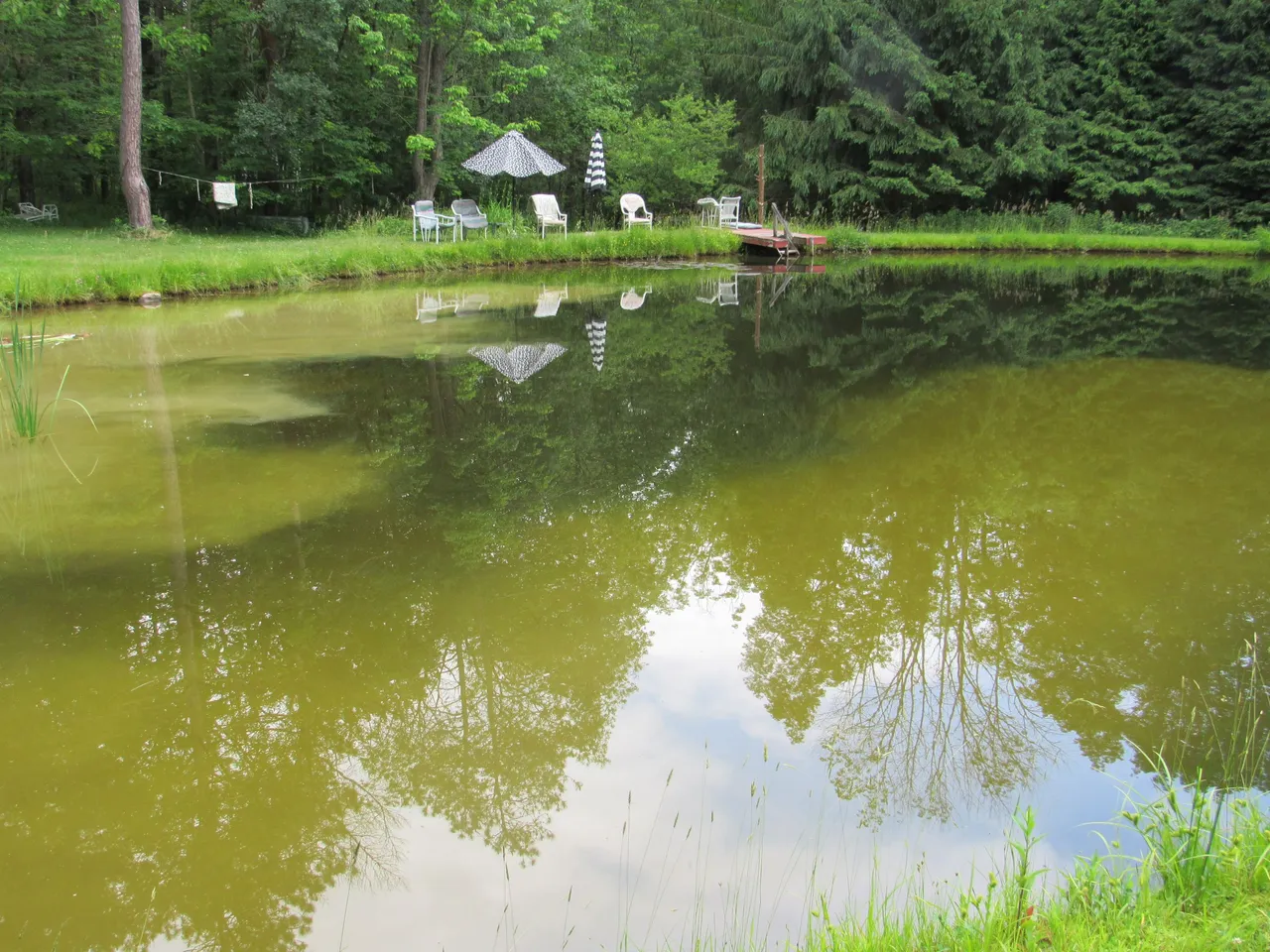
With the last of the cattails removed the water in the pond turned totally cloudy. I wonder how long it will take for the water to clear up?
